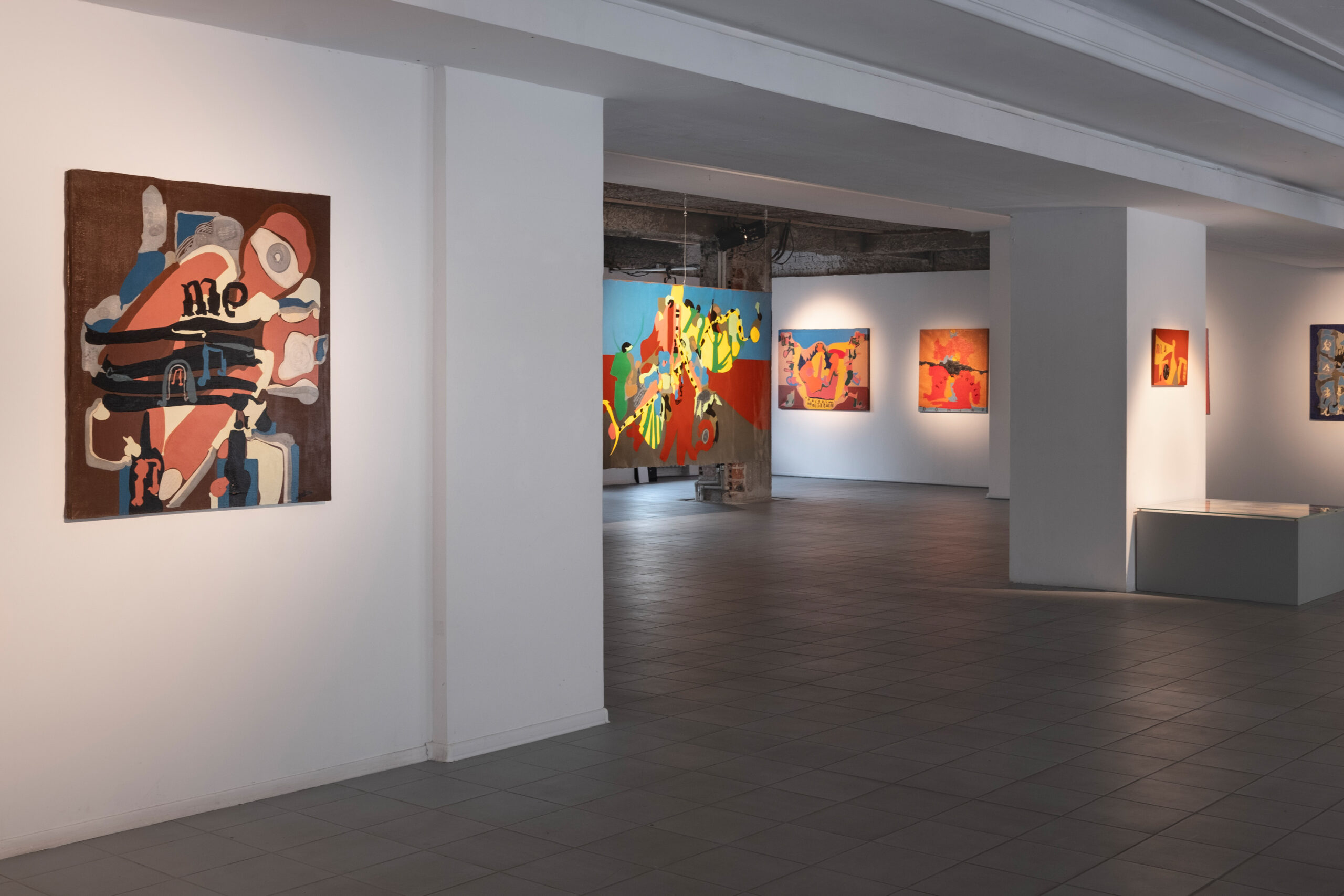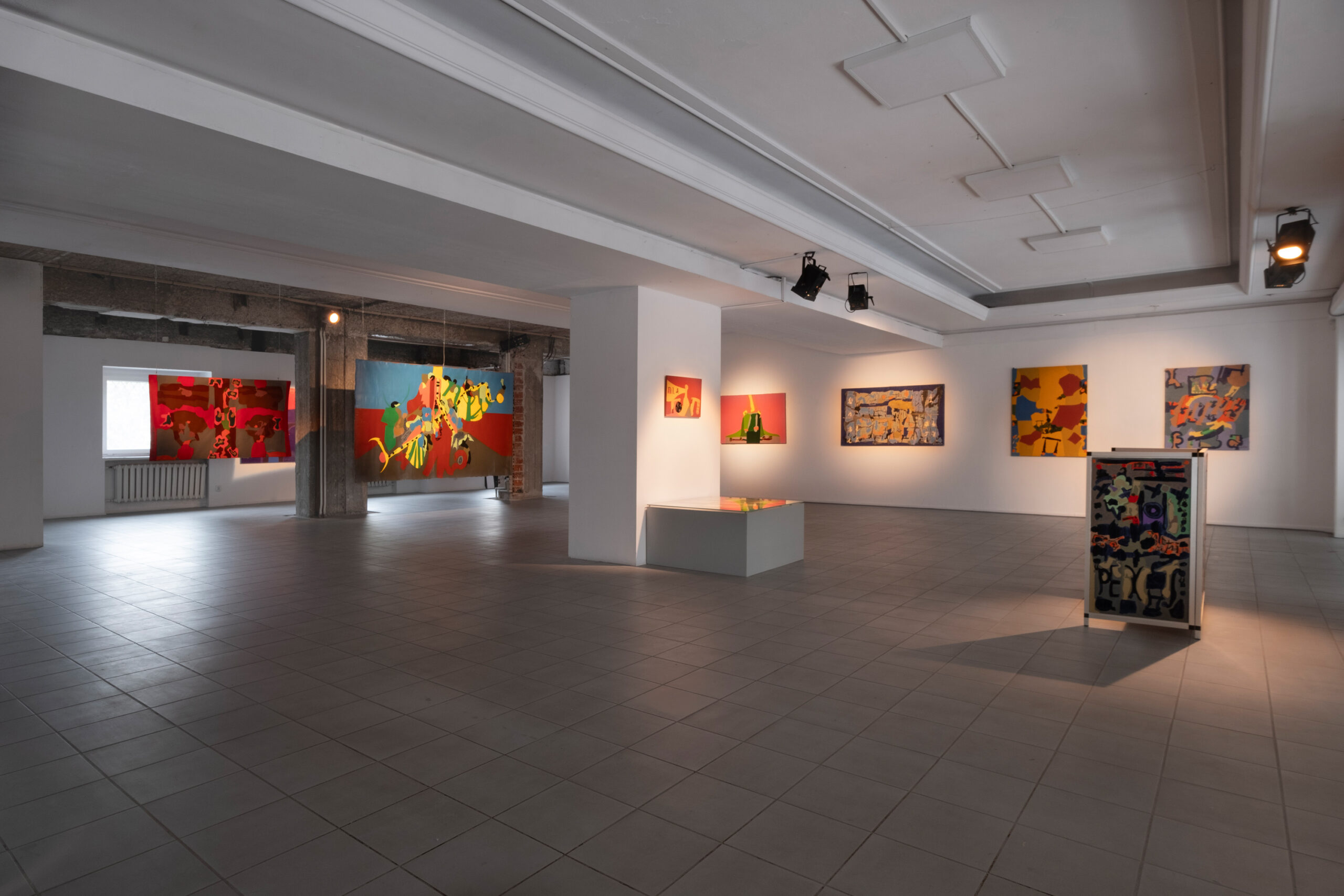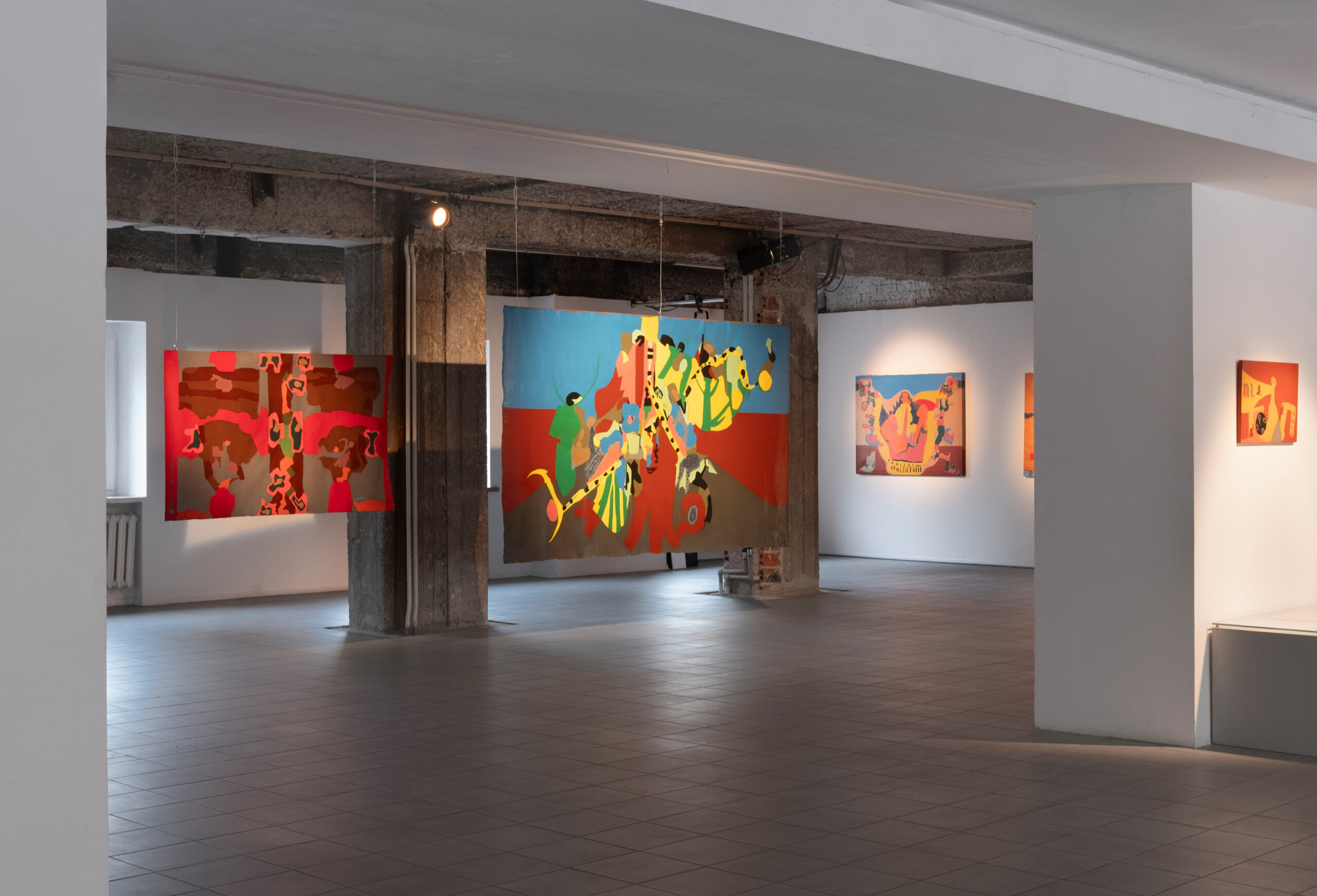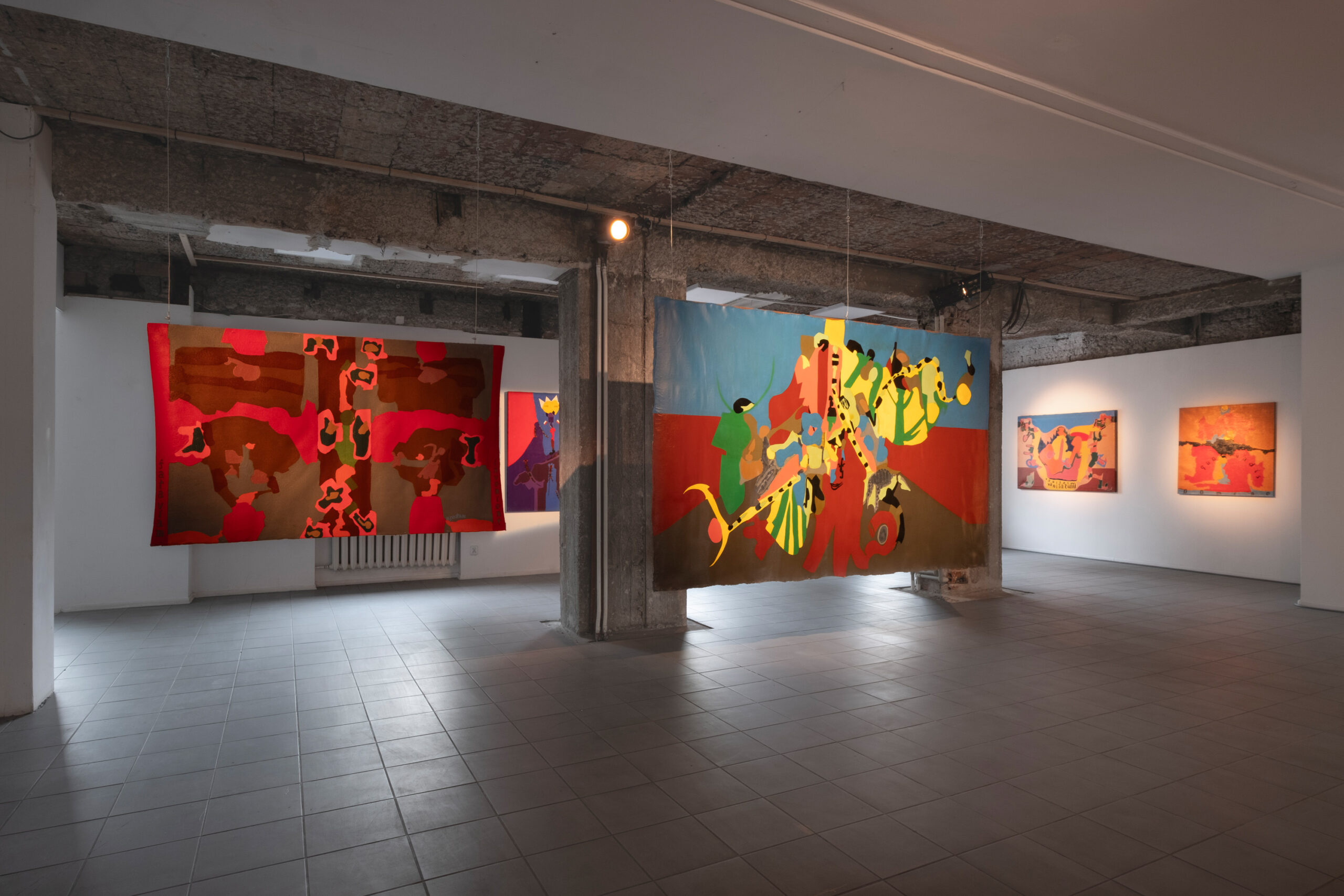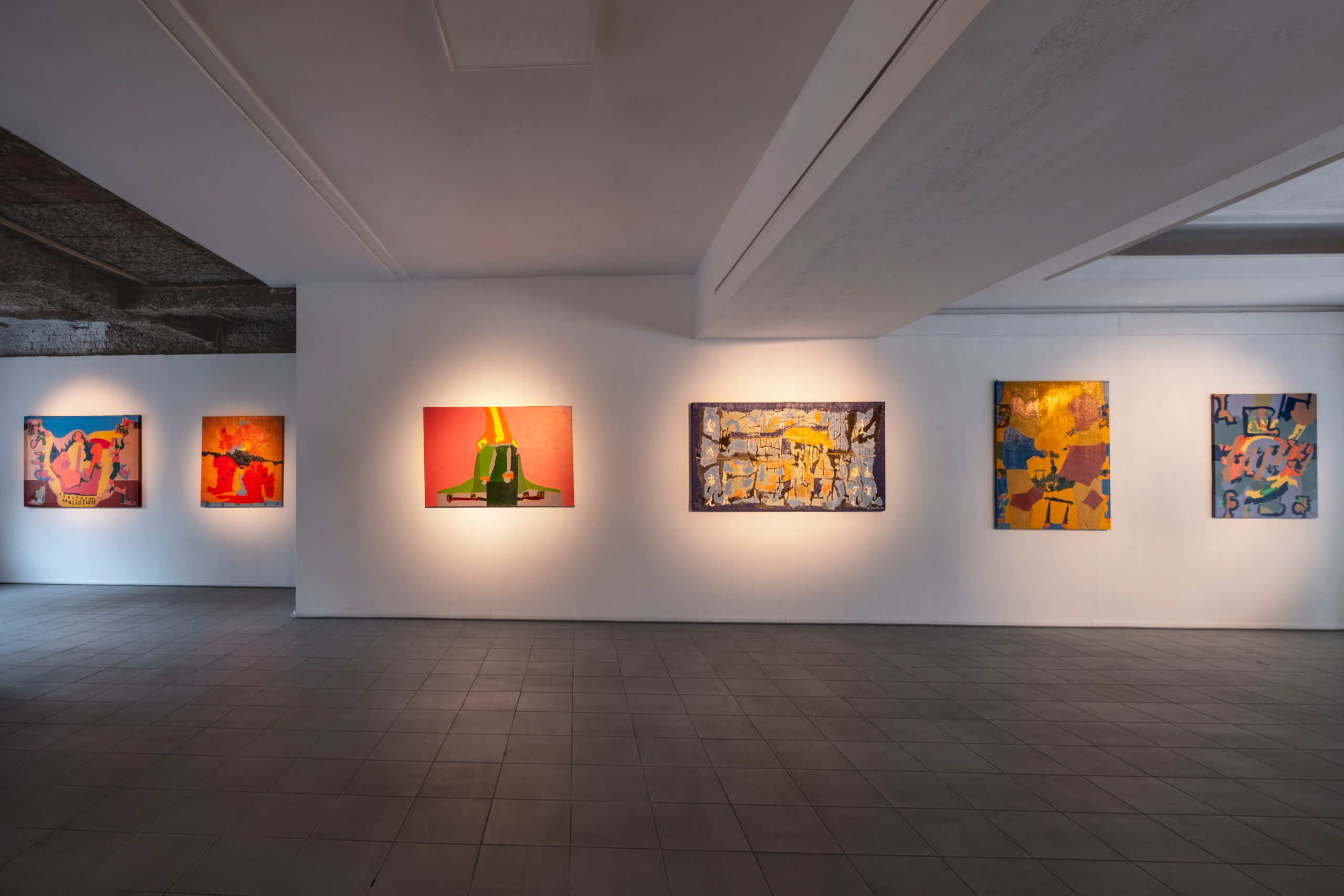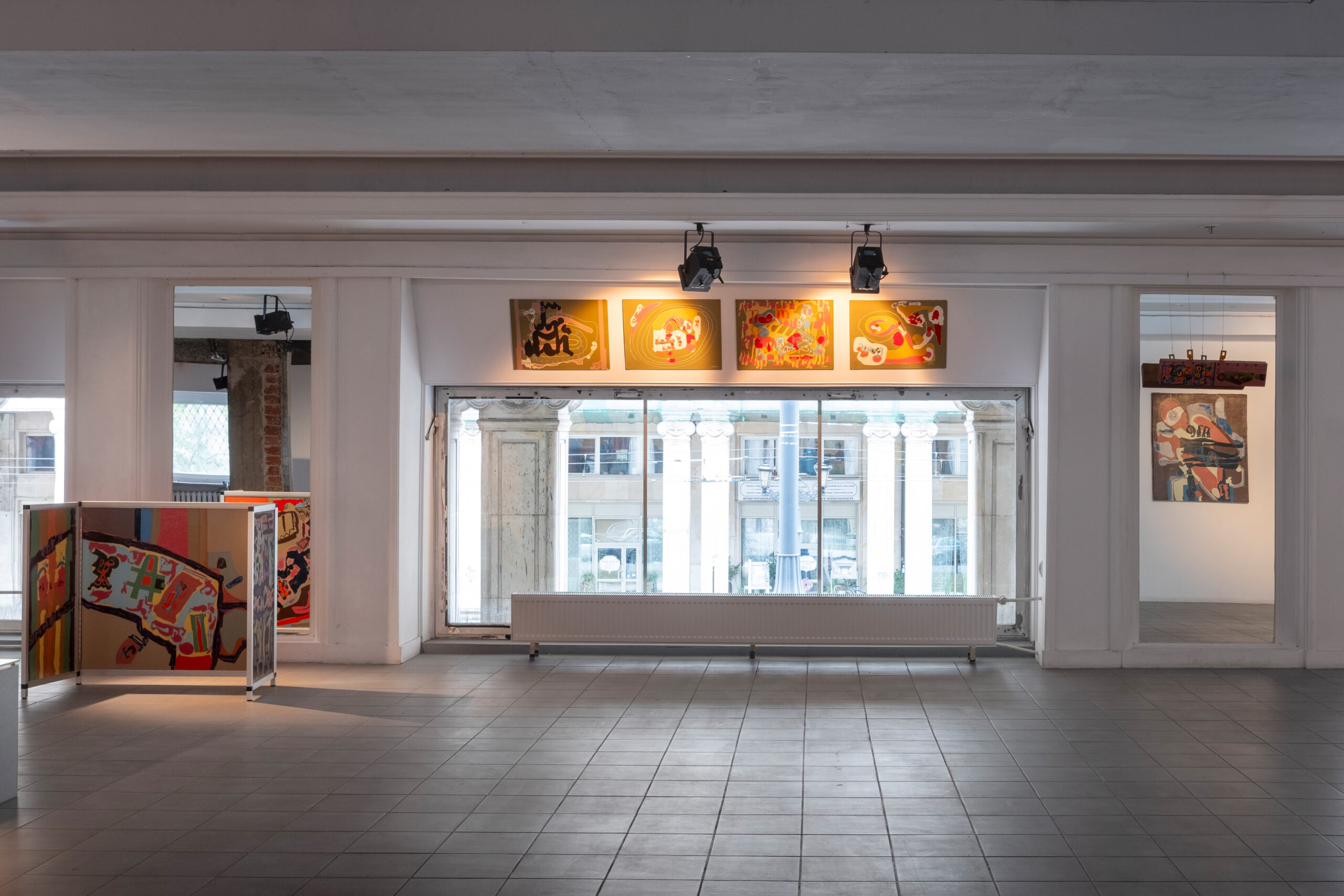Andrzej Partum
Open Poem
September 28 – October 10, 2023
Beside Art, the title of the photographic series by Zygmunt Rytka, Andrzej Partum’s friend, corresponds well to the latter’s own work. The series includes, among other things, self-portraits in poses suggesting contemplation in nature. The artist implies that this activity merely accompanies art, rather than constitutes it. From today’s perspective, Partum appears to be somewhat of a peripheral figure. He remains close to visual art, literature and music, but does not occupy a permanent place in any of them. His whole approach was directed against the institutional system of culture, which divides creativity into fields. Partum is a pan-artistic figure – in his case it is impossible to separate art from life. He is closest to visual art, but even here he functions as an author of activities that have survived more often in the form of anecdotes than works. He himself seems to be partly to blame for this situation. Mail art and actions were by their nature necessarily ephemeral. Recordings of his music are extremely rare. He published his poetry on his own, which doomed him to be invisible to a whole plethora of literary critics. What remains is his painting. And what to do with it?
Among the rare reviews of this area of his work is a short text by Koji Kamoji about the 1990 exhibition at the Warsaw Sculpture Gallery. There, the paintings are defined by the term ‘cool’, with freedom as their primary characteristic. One of Kamoji’s sentences is worth dwelling on. He wrote that in Partum’s work ‘there is no crystallisation of concepts’. What is this crystallisation of concepts? Perhaps this notion applies better to his poetry? Or does it actually establish a link between these areas?
The evolution of Partum’s literary work led towards a poetry of international writing. This notion implies such a loosening of the connection between signs and meanings that it can be perceived by a speaker of any language. It thus approaches concrete poetry. Words abandon meanings, what matters is rhythm, sound and unexpected juxtapositions. Partum studied foreign languages diligently, but the effects of these studies were poor – they did not help him communicate. However, they became an important part of a new phase in his work. English, French and Latin words began to appear in his painting compositions.
In 1984, Andrzej Partum moved to Denmark. In Copenhagen he continued his activities, among them the School of Positive Art Nihilism and the World Art Hospice, which he founded. It was there that most of his paintings were created. Poverty forced him to paint with anything on anything. Stolen car paints became the basic material. This technique was most likely known to him through Alfred Lenica, who experimented with this material. He painted with varnish not only on canvases or boards, but also on objects, often adapted by his own hands for painting purposes.
Partum’s work results in paintings that make no secret of their flatness – in fact, they flaunt it like rugs sewn together from various pieces. However, the gaze that glides across the smooth and glossy surfaces also encounters convexities that mark the boundaries between the stains – the varnish creates patches of varying thickness. The forms are clearly separated from each other despite the fact that their contours are not defined. The paints do not blend together. They are compositions of uniform patches. These paintings follow logically from the poetic experience of previous decades, but they also come into dialogue with the new expressionism of the 1980s. Except that the Expressionists sought to portray the violent emotional states so characteristic of the period. Partum was not interested in engaging in such a struggle – his paintings are games of concepts that, contrary to what Kamoji wrote, had been brought to such a deep crystallisation that they were no longer connected to any sense. After all, according to Partum, meaning was a form of oppression.
Daniel Muzyczuk
